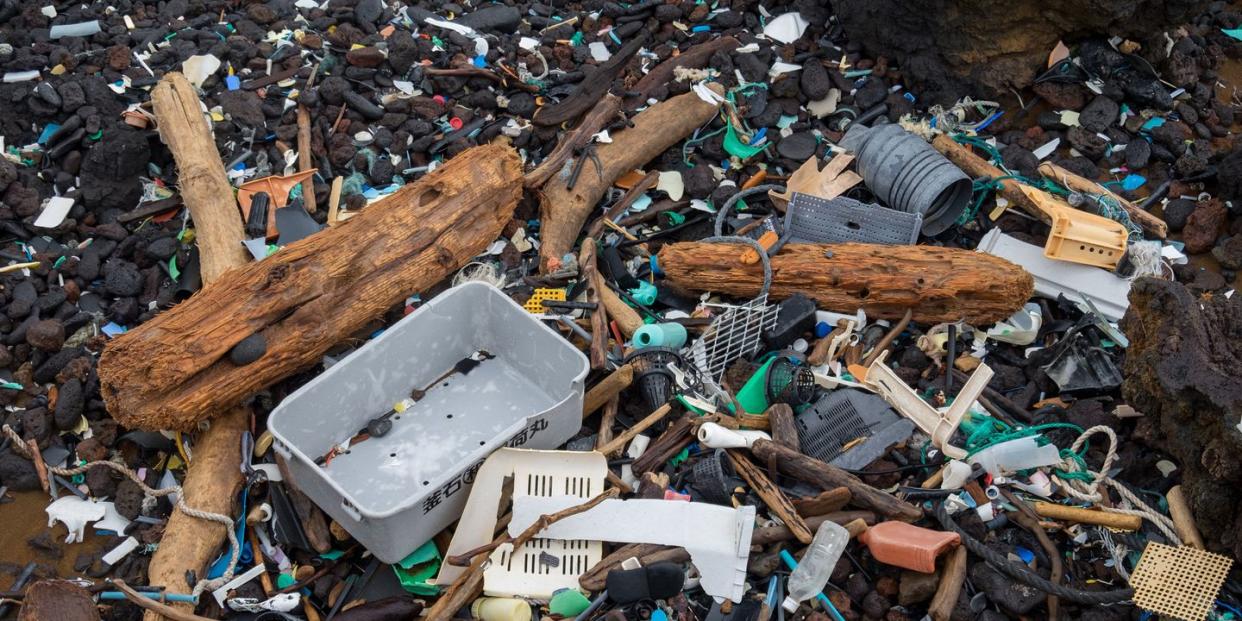The Pacific Garbage Patch Is Mostly Fishing Gear

When we imagine the Great Pacific Garbage Patch, a massive oceanic gyre of plastic that has taken over a part of the world's largest ocean, the mental images that come to mind are a sea of plastic bags, soda bottles, and those plastic six-pack rings that everyone knows kill wildlife. Researchers just published a study in Scientific Reports debunking that myth.
The patch, in fact, is made up mostly of abandoned fishing gear. According to the study, fishing nets alone make up 46 percent of the 79,000 tons of garbage. The rest of it is also largely made up of fishing gear, including eel traps, oyster spacers, crates, baskets, and ropes.
“I knew there would be a lot of fishing gear, but 46 percent was unexpectedly high,” Laurent Lebreton, an oceanographer and the lead author of the study told National Geographic. “Initially, we thought fishing gear would be more in the 20 percent range. That is the accepted number [for marine debris] globally-20 percent from fishing sources and 80 percent from land.”
“The interesting piece is that at least half of what they’re finding is not consumer plastics, which are central to much of the current debate, but fishing gear,” George Leonard, the chief scientist at the Ocean Conservancy, told National Geographic. “This study is confirmation that we know abandoned and lost gear is an important source of mortality for a whole host of animals and we need to broaden the plastic conversation to make sure we solve this wedge of the problem.”
The study also examined the size of the patch, finding that it was 16 times larger than originally thought.
Ocean Cleanup, an organization founded by Boyan Slat, a 23-year-old Dutch man, plans to start working to remove the garbage this year. It'll be quite a feat to remove garbage from an ocean area the size of Texas. Some plastic is nearly impossible to remove--the microplastics like microbeads that make up 8 percent of the total gyre. But the study shows that some of our focus on consumer plastics may not be targeting the most pressing issue--what happens to fishing gear after it's used.
Source: Scientific Reports via National Geographic
You Might Also Like

